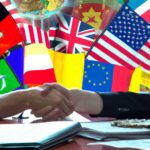Trade agreements and policies play a vital role in shaping international commerce. These agreements govern trade relationships between countries, impacting numerous industries and consumers. By regulating tariffs, quotas, and other trade barriers, these policies aim to promote fair competition and foster economic growth. In recent years, the rise of globalization has led to an increase in the number and complexity of trade agreements worldwide. These agreements help to facilitate the flow of goods and services across borders, benefiting both producers and consumers. However, negotiations can be challenging, requiring compromise and strategic planning to achieve mutually beneficial outcomes for all parties involved.
Table of Contents
- Dispute resolution mechanisms
- Future trends.
- History of trade agreements
- Impact on global economy
- Regional vs. global trade agreements
(Trade Agreements)
Trade agreements and policies play a crucial role in shaping global economic interactions. These agreements establish the rules governing trade relationships between countries, aiming to lower barriers and facilitate the flow of goods and services across borders. By minimizing tariffs and quotas, trade agreements promote efficiency and competition, leading to lower prices and increased choices for consumers. Moreover, they provide a framework for resolving disputes and protecting intellectual property rights.
Trade policies are essential tools for governments to regulate trade and promote their national interests. Countries may implement tariffs or subsidies to protect domestic industries or address trade imbalances. However, these policies can sometimes lead to trade conflicts and escalate into trade wars, adversely affecting global economic stability. Therefore, negotiations and diplomacy are crucial in reaching mutually beneficial trade agreements that promote fair competition and sustainable economic growth.
It is essential for countries to strike a balance between protecting domestic industries and fostering international trade cooperation. Transparent and predictable trade policies help businesses make informed investment decisions and contribute to economic development. Ultimately, well-crafted trade agreements and policies can create opportunities for businesses to expand into new markets and for consumers to access a wider array of products and services.
Dispute resolution mechanisms
Trade agreements and policies are crucial in regulating international commerce. Within these frameworks, dispute resolution mechanisms play a vital role in ensuring fair trade practices among nations.
When conflicts arise between parties involved in trade agreements, having robust dispute resolution mechanisms can prevent tensions from escalating into costly and damaging disputes. These mechanisms provide a structured process for resolving disagreements through negotiation, mediation, arbitration, or adjudication.
Imagine two countries embroiled in a heated disagreement over tariff rates on imported goods. Without an effective dispute resolution mechanism in place, this could easily spiral into a full-blown trade war with far-reaching consequences for both economies. However, thanks to the presence of established protocols for resolving such issues within their trade agreement, the parties can engage in constructive dialogue to find a mutually acceptable solution.
One commonly used method is negotiation, where parties attempt to resolve their differences amicably through discussion and compromise. This approach allows them to maintain control over the outcome while preserving their relationship – essential components of sustainable trade partnerships.
In cases where negotiations fail to yield results or if the stakes are too high for informal talks, mediation offers a more structured intervention. A neutral third party mediates discussions between the disputing parties to facilitate communication and help them reach a consensus. This process can be particularly beneficial when emotions run high and clear communication becomes challenging.
Arbitration is another popular option that provides binding decisions by impartial arbitrators agreed upon by both sides. Unlike litigation, arbitration offers confidentiality and flexibility while still delivering enforceable outcomes – making it an attractive choice for businesses looking to resolve disputes efficiently without resorting to lengthy court battles.
For complex disputes requiring legal expertise and formal judgments, adjudication serves as an alternative akin to traditional litigation but within the framework of the trade agreement’s rules and regulations – providing clarity on rights and obligations under international law.
Overall, effective dispute resolution mechanisms form the bedrock of stable international trade relations by offering quick resolutions that safeguard interests while promoting cooperation among nations — underscoring their significance within the broader context of global economic governance.
Future trends.
Trade agreements and policies shape the foundation of global commerce, navigating the intricate web of international trade relationships. Looking ahead to future trends in this arena is like peering through a misty veil – exciting, mysterious, and brimming with potential shifts that could redefine economies worldwide.
One prominent trend on the horizon revolves around digital trade. With technology evolving at warp speed, e-commerce has become an integral part of business operations globally. The rise of online marketplaces and virtual transactions heralds a new era where borders blur in the face of seamless digital interactions.
Moreover, as artificial intelligence and blockchain technologies gain momentum, we can expect these innovations to revolutionize supply chains and streamline cross-border transactions further.
The sustainability wave is another tidal force shaping future trade dynamics. Consumers are increasingly eco-conscious, demanding ethically sourced products and environmentally friendly practices from companies. This shift towards sustainability not only impacts consumer choices but also influences how governments approach trade agreements.
In the coming years, we may witness a surge in green tariffs or carbon border taxes aimed at leveling the playing field for sustainable businesses while penalizing those lagging behind in environmental stewardship.
Geopolitical changes are like thunderclouds on the horizon, casting shadows over global trade landscapes. The current tensions between economic powerhouses can spark waves of protectionism or spur collaborative efforts to forge stronger alliances through updated trade agreements.
Navigating this geopolitical minefield requires deft diplomacy and strategic foresight to ensure that mutual benefits drive policy decisions rather than short-term gains or nationalistic fervor.
Adaptability will be key in navigating these shifting tides of change. Businesses must embrace agility in their strategies, anticipating disruptions before they hit shore while remaining flexible enough to pivot quickly when unexpected challenges arise.
At its heart, future trends in trade agreements reflect a kaleidoscope of possibilities – from technological leaps propelling us into unknown territories to ethical imperatives reshaping our values on a global scale. Only time will reveal which path nations choose to tread amidst this whirlwind of transformational forces that beckon on the horizon.”
History of trade agreements
Trade agreements have a long and intricate history that has shaped the global economy we see today. These agreements are like intricate dances, where nations come together to agree on terms that govern their commercial relationships.
Centuries ago, trade was less about formal deals and more about individuals or groups bartering goods based on mutual need or desire. But as societies evolved and interactions between regions increased, the need for organized trade relations became evident.
The first semblance of trade agreements can be traced back to ancient civilizations such as Mesopotamia, Egypt, and China. These early pacts focused on facilitating commerce through established routes like the Silk Road which connected East and West Asia.
As time progressed, nations realized the benefits of setting formal rules governing trade with other countries. The Treaty of Methuen in 1703 between Portugal and England is considered one of the earliest bilateral trade agreements. It aimed to boost textile exports from England to Portugal while increasing wine imports into England.
In modern times, post-World War II saw a surge in multilateral trade agreements aimed at fostering economic growth among participating nations. Organizations like GATT (General Agreement on Tariffs and Trade) laid down frameworks for reducing tariffs and promoting fair trade practices globally.
With globalization accelerating in the late 20th century, mega-trade deals such as NAFTA (North American Free Trade Agreement) emerged to forge strong economic ties between North American countries – Canada, Mexico, and the United States
Emotions ran high during these negotiations as stakeholders grappled with balancing domestic interests against broader economic gains. Critics feared job losses while proponents hailed increased market access opportunities leading to heated debates both within nations involved in these accords and across international forums.
In recent years, there’s been a shift towards regional trade blocs like ASEAN (Association of Southeast Asian Nations) or EU (European Union). These blocs aim not only to enhance commerce but also foster political cooperation among member states showcasing how intertwined economics are with geopolitics today.
Today’s complex web of global supply chains underscores how crucial it is for countries to have robust mechanisms guiding their cross-border transactions ensuring smoother flows of goods & services amidst changing geopolitical landscapes worldwide.
(What global trade deals are really about (hint: it's not trade) | Haley Edwards | TEDxMidAtlantic)
Impact on global economy
Trade agreements and policies have a profound impact on the global economy. These agreements dictate how countries engage in trade, affecting everything from tariffs to intellectual property rights. The ripple effects of these decisions can be felt far and wide, shaping industries, economies, and even individual livelihoods.
When trade agreements are negotiated successfully, they can fuel economic growth by opening up new markets for businesses to explore. This expansion leads to increased competition, driving innovation as companies strive to stay ahead in the global marketplace. As a result, consumers often benefit from a wider variety of products at competitive prices.
Conversely, when trade agreements falter or fail to address key issues such as labor standards or environmental protection measures, the consequences can be dire. Industries may suffer due to unfair competition or lack of regulatory oversight, leading to job losses and economic instability.
The interconnected nature of today’s global economy means that actions taken in one part of the world reverberate across continents. A tariff imposed on steel imports in one country could trigger retaliatory measures elsewhere, sparking a trade war with lasting repercussions for all involved.
Emotions run high during these tense moments as uncertainty looms over businesses unsure of what tomorrow may bring. Workers fear for their jobs while governments scramble to protect their interests amidst shifting geopolitical dynamics.
The intricate dance of supply chains hangs delicately in the balance, each policy decision threatening to disrupt the carefully orchestrated symphony that powers our modern way of life. From farmers tending fields halfway around the globe to factory workers assembling goods destined for foreign shores – everyone is impacted by the ebb and flow of international trade relationships.
In conclusion, while trade agreements and policies form the backbone of our interconnected world economy, their effects reach deeper than mere numbers on a spreadsheet. They shape lives and communities with real-world implications that resonate far beyond boardrooms and legislative chambers. Balancing competing interests requires skillful negotiation and an unwavering commitment to fostering mutually beneficial relationships among nations – ensuring prosperity not just for some but for all stakeholders involved.
Regional vs. global trade agreements
When it comes to the realm of trade agreements, there’s a dichotomy that often arises: regional vs. global deals. Both have their own set of pros and cons, stirring up debates among economists, policymakers, and citizens alike.
Regional trade agreements bring neighboring countries together in an economic union. These pacts foster closer ties within regions by reducing tariffs and other trade barriers amongst member nations. Picture this – small businesses flourishing across borders as red tape is cut down, creating a bustling marketplace where ideas flow freely like a lively river weaving through diverse landscapes.
On the flip side, we have global trade agreements which aim for broader inclusion by bringing multiple countries from various corners of the world under one umbrella agreement. Think of it as a grand symphony where different instruments blend harmoniously to create beautiful music that resonates across continents.
Advocates for regional deals argue that they promote more significant integration due to shared geographical proximity and cultural similarities among member states. It’s akin to neighbors coming together for a block party – everyone knows each other well enough to dance comfortably without stepping on each other’s toes.
However, supporters of global agreements counter that these pacts offer greater access to markets worldwide, leading to enhanced specialization based on comparative advantages. Imagine being part of a massive international potluck feast where you can savor delicacies from every corner of the globe right at your fingertips!
Yet beneath these shiny promises lie complexities and challenges unique to both types of agreements. Regional alliances may inadvertently exclude non-member countries or lead to inter-regional conflicts when interests collide – much like neighborhood squabbles over parking spaces escalating into full-blown disputes.
Global treaties face criticism for potentially favoring larger economies at the expense of smaller ones or struggling with implementation issues due to vast differences in legal systems and regulatory frameworks – think trying to coordinate dance moves between ballerinas and breakdancers; it gets tricky!
In conclusion, whether regional or global trade agreements are more effective remains subject to ongoing scrutiny and debate amidst our interconnected world seeking balance between fostering local ties while expanding horizons globally —a delicate dance indeed!













